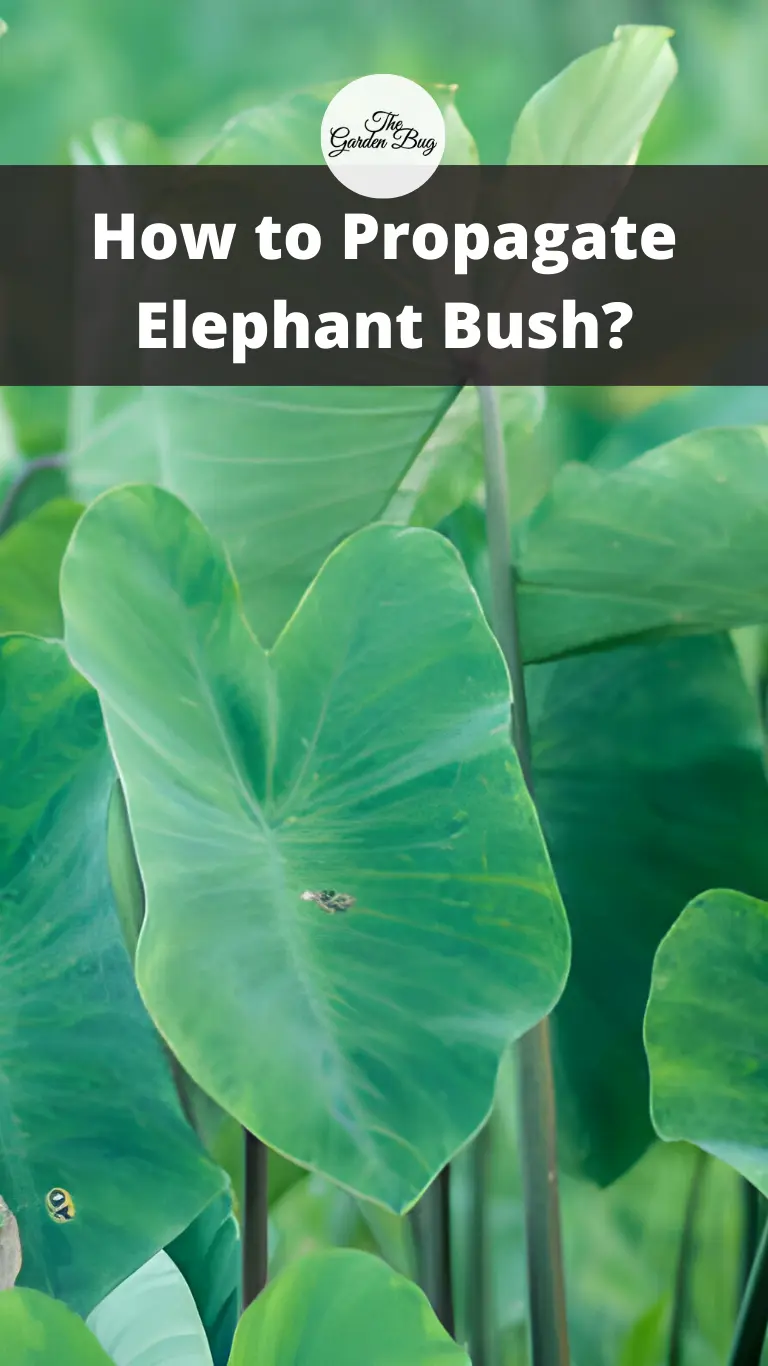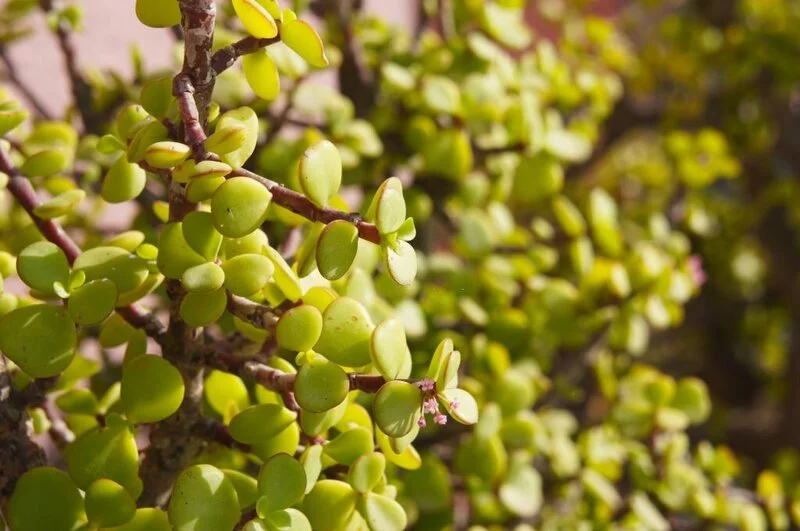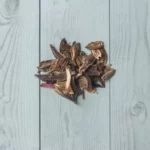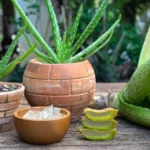Welcome to the fascinating world of succulents! One star of this world is the elephant bush, also known as Portulacaria afra. This South African native is a real stunner with its thick, glossy leaves and woody stems. Easy to care for and striking in appearance, it’s no surprise that more and more plant lovers are keen on adding this charming succulent to their collections. But did you know you can increase your collection without having to buy another plant? Yes, through propagation! Let’s explore this process together.
- FAST-ACTING ROOTING HORMONE FOR CUTTINGS: Hormex Rooting Powder is specially formulated to initiate and enhance the rooting process for plant cuttings. A propagation method known as cloning. Refer to the product image plant list to find the ideal strength for your plants
- VERSATILE FOR ALL GROWING MEDIUMS: Boost strong, healthy root growth in any growing medium, including Rockwool, coco coir, peat moss, soil, clay pellets, and more. It also helps prevent root rot and keeps plants strong and healthy during the rooting process.
- PURE AND CLEAN INGREDIENTS: Hormex Rooting Powder is free from alcohol, dyes, gel thickeners, and preservatives, making it ideal for supporting the healthiest growth in plants. Perfect for plants grown for consumption, including fruits, vegetables and medicinal plants.
- PROMOTES RAPID ROOT DEVELOPMENT: This product features Indole-3-Butyric Acid (IBA), this powerful rooting compound for plant cuttings, accelerates root formation and supports the growth of robust root systems for house plants, flowers, shrubs, fruits, vegetables, and more.
- HOW TO USE HORMEX ROOTING POWDER: Trim a 3″–6″ stem just below a node at a 45-degree angle from a healthy plant using a clean blade or cloning shears. DO NOT use scissors. Dip the cut end in water or Hormex Liquid Concentrate, then coat the bottom 1″ with Hormex Rooting Powder. Tap off excess powder, plant in a rooting cube or preferred starter medium, and ensure proper temperature, humidity, and light for best results.
Why Propagate an Elephant Bush?
Well, there are several good reasons for it. Firstly, propagation is an economical way to multiply your plant collection. Instead of purchasing a new plant, you can grow several from one parent plant. Secondly, it’s an excellent way to share the plant love. Got a friend or neighbor who adores your elephant bush? Gift them a propagated cutting! Thirdly, it’s a rewarding gardening task. There’s a unique joy in watching a tiny cutting grow into a thriving plant. So, let’s get started on the journey of propagating your elephant bush.
What You Will Need for Propagation
Getting started with propagation isn’t a complicated task. In fact, you’ll only need a handful of items that are easy to find, maybe even lying around your house! To propagate your elephant bush, you will need:
- A healthy elephant bush plant – The parent plant should be mature, well-grown, and free of diseases.
- A sharp, clean pair of scissors or pruning shears – This tool is used for taking cuttings. Keeping it clean helps to prevent the spread of disease.
- A pot or container – This is where your new baby plant will call home.
- Succulent or cacti soil mix – This special kind of soil ensures good drainage, which is essential for succulent health.
- Optional: rooting hormone – While not necessary, this can help stimulate root growth in your cutting.
That’s it! With these materials in hand, you’re ready to propagate your elephant bush.
Best Time for Propagation
Timing is important when it comes to propagation. For the elephant bush, the best time to propagate is during its active growing season, which is generally in the spring and early summer. During this period, the plant is growing and has plenty of energy, which makes it more likely for your cuttings to root and grow successfully. So, mark your calendars and prepare your shears – let’s turn that one elephant bush into many!
Step-by-Step Guide to Propagate Elephant Bush
Ready to grow your garden family? Let’s get into the steps of propagating your elephant bush.
- Choose the Right Stem: Look for a healthy, robust stem on your elephant bush. It should be thick and not show any signs of disease or stress.
- Cut the Stem: With your clean scissors or shears, cut a stem that’s about 2-4 inches long. Remember, it’s always better to make your cut at an angle. This gives the stem more surface area to produce roots.
- Let it Dry: Here comes the tricky part—patience. Let your cutting dry for about 1-2 days. This process, known as ‘callousing’, helps to prevent rot when the cutting is planted.
- Plant Your Cutting: Fill your pot with your soil mix and place the dried cutting about 1 inch deep into the soil.
- Water Carefully: Water your new plant lightly. The soil should be moist but not wet. Remember, elephant bush is a succulent and doesn’t like too much water!
Caring for the Propagated Elephant Bush
Once you’ve planted your cutting, it’s all about the right care to help it thrive.
- Position Right: Keep your new plant in a bright location but away from direct, scorching sun. Elephant bushes enjoy lots of light but can be sensitive to very strong sunlight.
- Water Wisely: Remember that elephant bush is a succulent, which means it prefers to stay on the drier side. Water your plant only when the soil is completely dry to touch.
- Monitor Growth: Watch out for new growth as an indication of successful propagation. This could be small leaves sprouting or roots growing at the base.
- Keep it Warm: Elephant bush prefers warm temperatures, so avoid exposing it to frost or very cold conditions.
With these simple steps, you’re not just a plant owner but also a plant propagator! Enjoy the process, be patient, and soon enough, you’ll have a new addition to your plant family.
Common Mistakes and Troubleshooting
Even for experienced gardeners, propagation can be a bit of a challenge. Let’s look at some common mistakes and how to fix them.
- Overwatering: This is the most common mistake. Remember, elephant bush is a succulent, and too much water can lead to root rot. If your new plant looks waterlogged or the leaves are turning yellow, you might be overdoing the watering. Let the soil dry out before the next watering session.
- Too much sunlight: While elephant bush loves the sun, too much direct sunlight can scorch the leaves. If the leaves look burnt or are turning a brownish color, try moving the plant to a location with indirect light.
- Not enough callousing time: If you’re eager and plant the cutting immediately after cutting, it may rot. Ensure the cut end has had enough time to dry and callous over before planting.
- Cold damage: Elephant bushes prefer warm temperatures. If exposed to frost or very cold conditions, the plant can suffer. Keep the plant in a warm environment.
Conclusion
Propagation is not just about expanding your garden; it’s also about deepening your relationship with plants. Propagating an elephant bush may require some patience and care, but the reward is a new plant that carries a piece of its parent’s legacy. So, don’t be afraid to make mistakes; they are a part of the learning process. In gardening, as in life, growth takes time, and every new leaf is a testament to your nurturing.






